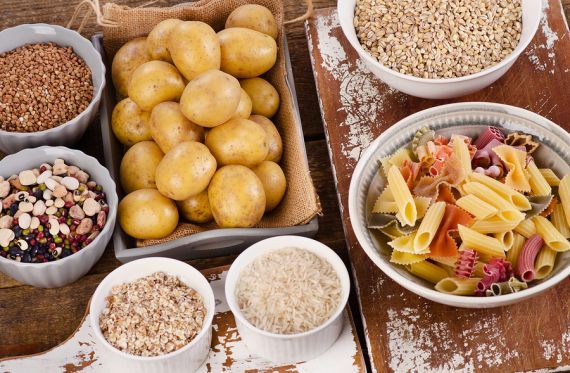Most of us have heard of the glycemic index (GI). Even if we're not familiar with how it works exactly, we know it's something worth paying attention to when considering our food choices. So what's it all about?
The GI Basics
The GI is a measurement tool to analyze food and help encourage healthy eating. It ranks food according to the amount of carbohydrates they contain and their impact on our blood sugar. The GI tells us how certain carb-filled foods will raise our blood sugar when they are eaten in isolation on an empty stomach. GI values range from 0-100. The higher the score, the higher the food's impact on our blood sugar.
The GI Rankings
Diets composed of food with low GI values supposedly lower our risk of diabetes, obesity and heart disease. Such low-GI food may also help prevent arthritis, osteoporosis, cancer, and other ailments. Here is a rundown of GI food rankings:
Low-GI Foods (ranked 55 and under): beans, whole-grain pasta, barley, most fruits and non-starchy vegetables, like carrots, nuts, and dairy products.
Moderate-GI Foods GI (ranked 56 to 69): unprocessed grains (like most brown rice and whole wheat products), table sugar, corn, honey, sweet potatoes, mangos, ripe bananas, and papaya.
High-GI Foods (ranked 70+): white rice, white bread, pretzels, instant oatmeal, numerous breakfast cereals, most melons, and boiled potatoes.
Impact on Blood Sugar
When food with a high GI value is eaten by itself, it is broken down quickly into glucose and absorbed causing a swift rise in our blood sugar. This triggers a jump in our insulin, the hormone that transfers glucose from our blood into our cells where it is used for energy. Then, we experience a sharp drop in our blood sugar, which may lead to weight gain by stimulating our appetite, activating our brain regions where cravings take place, increasing fat storage, and reducing fat burning.
In contrast, eating foods by themselves that have low GI values could result in fewer jumps in our blood sugar. While research results have been inconsistent, evidence suggests that, overall, food with lower GI values is associated with less weight gain.
It's Complicated
The GI is complicated and unpredictable. Different varieties of bread, pasta and rice have different GI values. The same holds true for different types of vegetables and fruits. The various ways that food is processed, stored, and prepared also impacts the GI. For instance, fat, protein and fiber tend to lower a food's GI value. The more cooked or processed a food, the higher the GI value. However, there are inconsistencies.
While the GI value represents the type of carbohydrate in a food, it doesn't represent the amount of carbohydrates typically eaten. Portion sizes still matter, especially when managing blood glucose and for losing or maintaining weight. Plus, GI measures each type of food when eaten in isolation and on an empty stomach - which is not a typical circumstance. Not to mention, the glycemic response can vary among different people who consume the same food.
The Bottom Line
The GI concept can help us approach meal planning in a more thoughtful manner, especially for people with diabetes who need to manage their glucose levels. It reminds us to choose foods that have a lower GI. However, when eating a high-GI food, we can incorporate low GI foods for a more balanced meal.
But, there's no question that the GI complicates our eating habits. By simply following general dietary guidelines of eating more whole grains, beans, fruits, and vegetables and cutting back on highly processed and sugary foods and beverages, you'll almost automatically eat a balanced, healthful meal.
